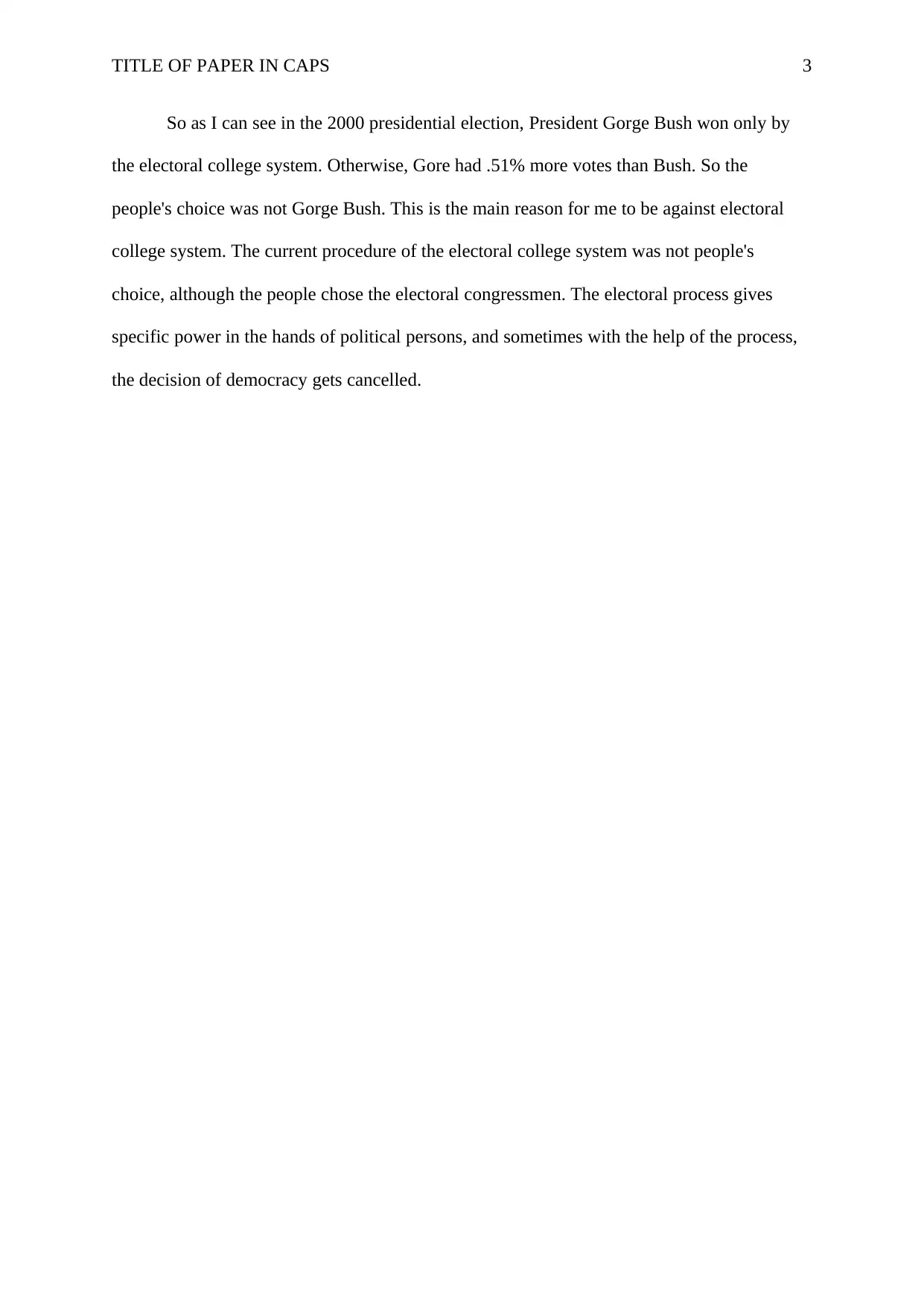Analysis of the Electoral College and Its Impact on US Elections
VerifiedAdded on 2022/09/12
|4
|577
|18
Essay
AI Summary
This essay examines the Electoral College system, focusing on its structure as outlined in the Constitution and the 12th chapter, and its impact on US presidential elections. It details the process, including how states allocate electoral votes and the role of electors. The essay highlights the 2000 presidential election, where George W. Bush won despite Al Gore receiving more popular votes, illustrating the potential for the Electoral College to produce outcomes that differ from the popular vote. The author expresses their opposition to the Electoral College, arguing that it can undermine the principle of the people's choice and grant excessive power to political figures, potentially canceling democratic decisions. The paper references the works of Edwards (2019) and Zingher (2016) to support the analysis.
1 out of 4






![[object Object]](/_next/static/media/star-bottom.7253800d.svg)